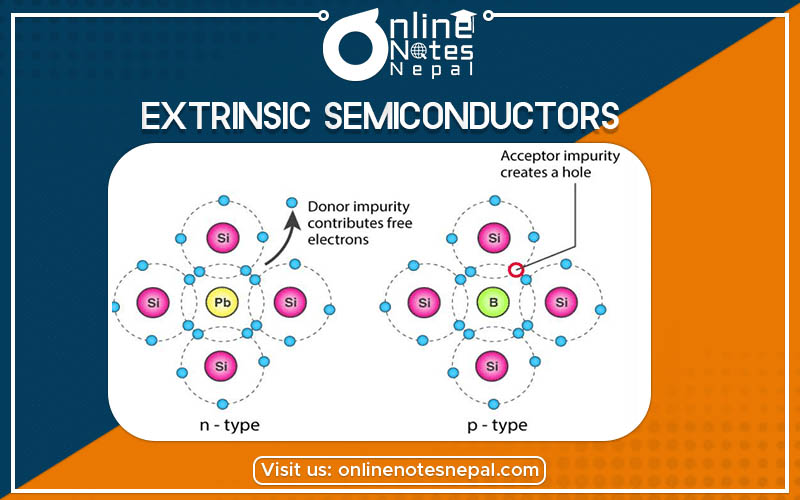Published by: BhumiRaj Timalsina
Published date: 30 Jun 2021

Extrinsic Semiconductors are those semiconductors which are doped by a specific impurity which deeply modifies the electrical properties. And, also makes it suitable for electronic applications. That means, it is the impure semiconductor which helps in the conduction process.
A solid substance can conduct electric current only if it contains charged particles, electrons. These should be free to move about and not attached to atoms. In a metal conductor, it is the metal atoms that provide the electrons. Therefore the number of conduction electrons in a metal is equal to the number of atoms, which is a very large number, making metals good conductors. Opposite in semiconductors, the atoms that make up the bulk semiconductor crystal do not provide the electrons which are responsible for conduction.
In semiconductors, electrical conduction is due to the mobile charge carriers, electrons or holes which are provided by impurities or dopant atoms (which are doped) in the crystal. The doping of the intrinsic semiconductor changes it into the extrinsic semiconductor. Donor impurity atoms have more valence electrons than the atoms they replace in the intrinsic semiconductor lattice. Acceptor impurity atoms have fewer valence electrons than the atoms they replace in the intrinsic semiconductor lattice. The conductivity of semiconductor rises when some elements belonging to either group III or group V in the Mendeleev’s Periodic table adds on it. These elements are impurities. These impurities dope the semiconductors.
N-type semiconductors
These are those semiconductors which are made by adding an impurity to a pure semiconductor. For example Silicon or germanium.
P-type semiconductors
We form those semiconductors by adding trivalent impurities to a pure semiconductor in a small amount. This results in a larger number of holes in it.
An extrinsic semiconductor makes the semiconductor electronic devices such as diodes, transistors, etc. Devices that enable current switching also make use of extrinsic semiconductors such as transistors. Bipolar junction transistors are the types of transistors.
Field-effect transistors are also the type of transistors. We use extrinsic semiconductors for making these.